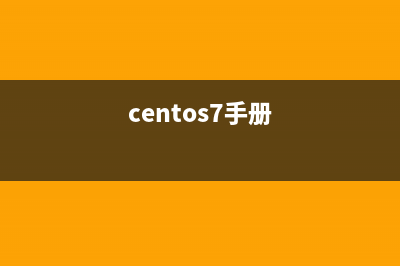位置: 编程技术 - 正文
Perl中的符号 ->;、=>; 和 :: 分别表示什么意思?(perl中的$1)
编辑:rootadmin推荐整理分享Perl中的符号 ->;、=>; 和 :: 分别表示什么意思?(perl中的$1),希望有所帮助,仅作参考,欢迎阅读内容。
文章相关热门搜索词:perl中qw,perl常用函数,perl 制表符,perl-v,perl中qw,perl中qw,perl处理特殊符号,perl处理特殊符号,内容如对您有帮助,希望把文章链接给更多的朋友!
What do the ->, => and :: symbols mean&#;
The -> is the "infix dereference operator". In other words it is the means by which one calls a sub with a pass by reference (among other things you can do with ->). As stated above most things in calls to perl/Tk routines are passed by reference. The -> is used in perl just as in C or C++. (Most of the widget primitives are elements of the Tk:: "perl class".) A simple example of dereferencing would be: $x = { def => bar }; # $x is a reference to an anon. hash print $x->{def},"/n"; # prints ``bar''
Note that in the case of calling perl/Tk subs there may be more than one way to call by reference. Compare my($top) = MainWindow->new;
with my($top) = new MainWindow;
But in general you will be making extensive use of calls like: $top -> Widge-type;
There is a clear and succint discussion of references, dereferences, and even closures in man perlref(1) or see the perl 5 info page at: The use of the => operator is quite common in perl/Tk scripts. Quoting from man perlop(1):
The => digraph is simply a synonym for the comma operator. It's useful for documenting arguments that come in pairs.
You could say that => is used for aesthetic or organizational reasons. Note in the following how hard it is to keep track of whether or not every -option has an argument: $query -> Button(-in,/$reply,-side,'left',-padx,2m,-pady, 2m,-ipadx,2m,-ipady,1m)->pack(-side,'bottom');
As opposed to: $query ->Button( -in => /$reply, -side => 'left', -padx => 2m, -pady => 2m, -ipadx => 2m, -ipady => 1m )->pack(-side => 'bottom');
By the way if you wanted the numeric "greater than or equal" you would use >= not =>.
While the :: symbol can be thought of as similar to the period in a C struct, it is much more akin to the :: class scope operator in C++: a.b.c; /* something in C */ a::b::c(); // function in C++ $a::b::c; # a scalar in Perl 5 @a::b::c; # a list in Perl 5 %a::b::c; # an associative array or "hash" in Perl 5 &a::b::c; # a function in Perl 5
It is also analogous to the single forward quotation mark in perl 4: $main'foo; # a $foo scalar in perl 4 $main::foo; # a $foo scalar in Perl 5
For backward compatibility perl 5 allows you to refer to $main'foo but $main::foo is recommended.
译文:
符号->,=>和::分别表示什么意思?
‘- >'符号是“插入式解引用操作符”(infix dereference operator)。换句话说,它是调用由引用传递参数的子程序的方法(当然,还有其它的作用)。正如我们上面所提到的,在调用Perl/Tk的函数的时候,大部分参数都是通过引用传递的。Perl中的‘->'功能就和它们在C或C++中一样。(大部分原始的组件都是Tk中的Perl类的元素。)下面是一个简单的解引用的例子:
$x = { def => bar }; # $x是指向一个匿名hash的引用
print $x->{def},"/n"; # 输出``bar''
注意,在调用Perl/Tk的子程序时有多种不同的方法进行引用。我们可以比较一下:
my($top) = MainWindow->new;
和
my($top) = new MainWindow;
两种方法的不同。
但是,一般来说我们通常都使用这样的方法调用:

$top -> Widge-type;
在perlref的手册页中有详尽的关于引用、解引用、和闭包的讨论,或者也可以在下面的网页上查看Perl5的信息页:
在Perl/Tk的脚本中‘=>'操作符时很常见的。perlop手册页中说:关系操作符=>只是逗号操作符的替代物,它在显示成对的参数时非常有用。
你可以认为=>只是为了程序的美观和易维护而被使用的。请看,在下面的例子中,要想监测是否每个选项都有对应的值,是多么的困难:
$query -> Button(-in,/$reply,-side,'left',-padx,2m,-pady,
2m,-ipadx,2m,-ipady,1m)->pack(-side,'bottom');
而下面的这个则相反:
$query ->Button( -in => /$reply,
-side => 'left',
-padx => 2m,
-pady => 2m,
-ipadx => 2m,
-ipady => 1m
)->pack(-side => 'bottom');
顺便说一下,如果你需要用数字“大于等于”的符号,你应该用“>=”而不是“=>”。
“::”符号可以认为是与C语言中的“.”相似的,而它更像C++中的::类范围操作符。
a.b.c; /* C语言中的 */
a::b::c(); // C++ 中的函数
$a::b::c; # Perl 5中的标量
@a::b::c; # Perl 5中的列表
%a::b::c; # Perl 5中的关联数组(或叫hash)
&a::b::c; # Perl 5中的函数
另外,Perl4中的单撇号也具有相同的功能:
$main'foo; # Perl 4中的标量$foo
$main::foo; # Perl 5中的标量$foo
出于向后兼容的考虑,Perl5也运行使用$main'foo,但是仍推荐使用$main::foo。
perl uc,lc,ucfirst,lcfirst大小写转换函数 大小写字母转换:函数uc(uppercase)将所有的小写字母转成大写;函数lc(lowercase)将所有的大写字母转成小写;Perl提供了四个内置的函数类,从而能够轻松
在Django框架中自定义模板过滤器的方法 自定义过滤器就是有一个或两个参数的Python函数:(输入)变量的值参数的值,可以是默认值或者完全留空例如,在过滤器{{var|foo:"bar"}}中,过滤器foo会被传
Perl图形化包管理工具PPM学习使用笔记 PPM(Programmer'sPackageManager)是ActivePerl自带的一个图形化管理工具,有了这个工具,要升级,更新,移除Perl的Package都非常方便。只需要输入ppm或者ppmgui就可
标签: perl中的$1
本文链接地址:https://www.jiuchutong.com/biancheng/368767.html 转载请保留说明!
](https://www.jiuchutong.com/image/20240129/1706499636.jpg)


